
Spring Cleaning Challenge: Imperial Guard (PROJECT COMPLETE!)
The Regimental Homeworld
An Introductory Primer for those Attached or On Assignment with the Local Forces
The Regimental Home world is known to them as Galland but is known to the wider Imperium as Galland III.
Before being Liberated by the Fleet of Corax, Primarch of the Raven Guard during the Great Crusade it comprised of Eight distinct tribal groups each occupying one of the eight continents.
With the arrival of the Raven Guard all but two of the Tribes surrendered to them, possessing only black powder technology at the time, and two resisted.
It took less than three days for the Raven Guard to annihilate the two Tribes and a misunderstanding created the most important law of all Galland.
When the Council of Seven (One representative from each tribe plus the new Imperial Governor) thanked Corax for bringing them into the Imperium (it wasn’t really Corax just a Captain, Corax never set foot on the planet) he replied “Don’t mention it”.
Any mention of the two “Lost Tribes” is punishable by death ever since.
The Galland Military of the 41st/42nd Millenium is a complete mess.
After a full century in Rebellion after the fall of the Knights of the Blade they were mercilessly brought back into compliance.
It was then decided that a unified Military was too dangerous to leave in the hands of a local Governor or even System Commander and so drastic action was taken.
All Standard Issue Tanks, APC’s and pretty much everything bigger than a Sentinel was taken from them, the standard issue Lasgun and Flak Vest was replaced with more archaic variants that appealed to the traditionalist desires of the military who saw themselves as soldiers of Galland not of some Imperium that didn’t even notice they had left it for a century.
The military was also broken up. No longer would the Infantry have access to easily portable weapons like the Autocannon or Heavy Bolter instead the only real support weapon that the Infantry Squad can call on is the lightened “Galland Pattern” Missile Launcher officially designated the ‘Precision Infantryman’s Armour Terminator’ or “PIAT”.
The men who carried the PIAT’s were also seperated from the Infantry instead placed into a semi prestigious “Grenadier” Company. Each Battalion has a single Grenadier Company who are loaned out to the infantry squads or grouped together for dedicated duty. They wear no tribal colours nor any helmets wearing either a black side cap or nothing at all and an inverted uniform of a Blue Jacket and Green Pants.
Some Grenadiers carry Sniper Rifles designated ‘Battalion Reconnaissance Elimination and Negation Guns’ or “BREN” Guns. These are only ever loaned out to Platoons and fight as dedicated teams that hunt down enemies at the direction of the Officer to which they are attached.
All Grenadiers obey the orders of any Grenadier Officer above all others. If a Grenadier Lieutenant orders the to lie down and a Regular Major tells them to advance then they lie down.
Upon Promotion to NCO Rank the Grenadiers have three options.
First they can Refuse the promotion and Take a “Veteran” Status that gives them NCO privileges but no increase in rank.
Secondly they can take the Promotion and move to be the assistant to a Grenadier Platoon Commander. Grenadiers are always dispatched in piece meal to different Battalions and a Grenadier NCO will always join the Platoon Leaders Command Squad to give advice on their deployment. From there they can work their way up to RSM of Grenadiers where they give advice to the Planet’s Marshall.
Finally they can chose to take an available position as a Drill Sergeant at a Grenadier Training Academy. The pay is less, the prestige is not as good and he can be recalled at any time but at least the risk of death is greatly decreased.
The Battalions of the Galland Infantry are deigned with the Maxim “Less Men More Men”.
“Less Men” refers to individual Officers having control of Less Men.
“More Men” refers to more Officers to reduce the chance of a handful of renegades taking control of the military.
Each Battalion is Made up of Three Companies and is lead by a Lieutenant Colonel and a Major of the Grenadiers, they are assisted by a Sergeant Major of Battalion and a Grenadier Sergeant Major. Grenadiers are always considered to be subordinant to infantry officers when operating outside the Grenadier Company.
Each Officer has his own Command Squad of Four Men Lead by the NCO. The composition is entirely up to the Officer in question with some preferring a trusty Bugler and some Veterans with Lasguns to help him organise a battle while others will poach an Artillery Gun and lay down some serious firepower.
Each of the Three Companies is lead by a Major and is assisted by a Captain and Company Sergeant Major. If his Company contains any Grenadiers then a Grenadier Sergeant will be attached to his Platoon Command Squad.
The Company Command Squad is given the exact same freedoms as any other.
Each Company is made up of Three Platoons Each Consisting of Three Squads.
Each Platoon is lead by a Lieutenant assisted by a Sergeant and if he has any Grenadiers attached to his platoon a Grenadier Corporal will also be present.
The Platoon Command Squad is given the exact same freedoms as any other.
Each Platoon is made up of three Infantry Squads.
The Squad is made up of Ten Men:
One NCO (Corporal) Who Carries the ceremonial Sword and wears a turban covered helmet rather than the faux hair covered helmet of the infantry.
One Bugler (Two per Platoon) who carries a Bugle and has the option to carry a Lightened Carbine but these are expensive and purchased at the mans own expense, never the less the convenience of a carbine is quite often worth it.
Two Grenadiers (If Grenadiers are Attached to the Platoon otherwise Two Men with Lasguns). One armed with a PIAT and the Other a Loader. The issue of who gets the PIAT and who loads is not one set in stone. Many Veterans are happy to let the eager new recruits to lug the PIAT around while others are loathe to let some rookie handle the important weapon.
Six Riflemen. Six Men armed with a Lasgun and Grenades.
Their is no rank of Lance Corporal on the Galland Military instead men with the right initiative and skill are designated as “Veterans”
Veterans can be organised into “Assault Units” only at the direction of the Battalion Commander. These units can be issued with the shortened “Shotgun” variant of the Lasgun and are always tasked with the most deadly of missions but are given substantially increased pay and medals aplenty.
Veteran Grenadiers can volunteer to join such units but it is rare to see them in action.
The Veterans can elect to carry Shotguns and can have the Platoon Specialists attached to them with Flamers or Plasma Guns to help them clear the enemy from their trenches or Bunkers.
The Shotguns are just cut down rifles. The Las Ammunition is swapped for a more dispersed Scatter Gun style ammunition. When fired from a full length Rifle the effect is essentially the same as firing a standard Las Round but when the Las Musket is cut down to the Second Barrel Band the shot spreads and becomes an effective shotgun, it also retains the firing mods of the full rifles.
Some Veterans take it even further and cut their guns shorter to get a wider spread.
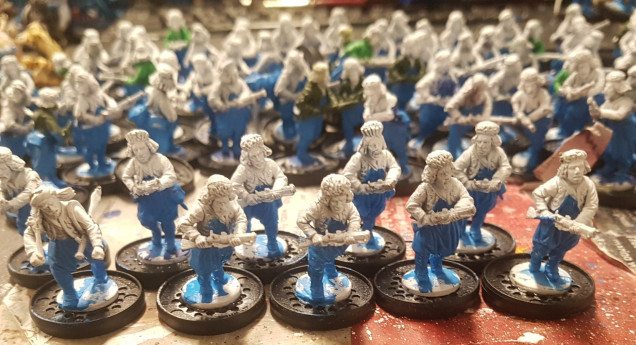 In the Foreground are Grenadiers with a Mix of Shotguns and Sawn Off Shotguns. Such Illegal Modifications are often Overlooked by the Provosts because of the Reputation of the Men who did it. Plus Often the Man in Question is Still Holding Said Shotgun....
In the Foreground are Grenadiers with a Mix of Shotguns and Sawn Off Shotguns. Such Illegal Modifications are often Overlooked by the Provosts because of the Reputation of the Men who did it. Plus Often the Man in Question is Still Holding Said Shotgun....Each Battalion has Two Artillery Batteries each of Three Divisions and a Command Gun.
Two Divisions are made up of three guns, Two Lascannons and an Autocannon while the Third is made up of Three Lascannons. The Command Gun can be any of the available Variants. Most Battalion Commanders will use a Heavy Bolter for the Role to offset the Heavy Anti Armour Focus of the Battery.
The Command Gun is often crewed by the most senior men and given to the Battalion Commander to allocate as he sees fit.
Often the an Entire Battery will be allocated to a Single Company to create a strong anti armour position that can cover it’s neighbor. The other is normally left as a “Barrage Battery” for general use.
The Artillery is drawn from the minor nobility of the major cities. The Cavalry is seen as the most prestigious of the Branches but the artillery is more prestigious than slogging with the infantry or Emperor forbid crawling into one of the homemade Death Traps they call a tank.
The minor nobility often voluntarily enlist before a conscription officer can find them and drag them off somewhere unpleasant. In theory any volunteers (not conscripts) can decide with which regiment they serve but in practice the cost of outfitting yourself personally (Cavalry) or the bribes required to get the cushy services (artillery) are too much for the average man and even the moderately wealthy man.
The relatively low death rate, the easy deployments (Artillery don’t scout, forage or anything like that) and the prestige that comes with being able to pay the expensive unofficial bribe to get yourself on the Artillery List all make post Military life very comfortable although not as comfortable as an ex-cavalryman.
The Artillery wear double breasted jackets and tailored pants in the noble colour of Purple and show their bravery by wearing a soft cap rather than a helmet like other foot soldiers. Some Men even carry dress uniforms into battle with them slung over their shoulder in a special carry bag ready to show off in after the battle is over.
Each Gun is crewed by Five men.
Gun Corporal – He Commands the Gun
Gunner – Fires the Gun
Gun Sighter – Sights the Gun
Gun Aligner – Aligns the Gun
Vox Officer – Not an Officer but he carries a Vox Amplifier that enables the squad to send and receive Morse code vox messages. It looks like an old Rammer in homage to the Cannon Crews of Old.
For Long Range Bombardments the Autocannons can be Fired with a Lanyard that Holds Down the Trigger without the Crew being in Danger, either from the guns recoil or counter battery fire. A Mechanism can be Fitted to the Trigger that Holds it down when the Lanyard is released, the Mechanism can be quickly removed once the Bombardment Phase of the Battle is Over. It Requires Specialised Equipment to Fit so Once Removed the Effect is Permanent at Least Until an Armouer can be Found.
Officially the Artillery are meant to be solely responsible for the transport of the guns but outside of battle it is extremely rare to see them actually moving them on campaign. Often the crews will simply bribe some of the infantry they’re attached to and have them drag the guns.
The Artillery, like the Grenadiers, are a completely separate Branch of the Military and do not have to answer to other officers other than those of the Artillery. Artillery Officers are among the most educated men of Galland since promotion is entirely on merit (and the initial bribe to get into the regiment) they are very respected although seen as strange by other officers who can find themselves promoted to Captains or Majors within a decade while men they graduated with are still mere Lieutenants in the Artillery. At least the Artillery has a much lower mortality rate than the infantry officers and comes with greater prestige when a man retires. Although the Pension of an Artillery Officer is the same as that of an Infantry Officer and this means an artillery officer that wishes to retire better have another source of income to supplement their pension, after three decades of service an Infantry Officer Might Retire as a Colonel or Brigadier while an Artillery Officer would be lucky to make Major without a lot of his peers being killed in action or retiring early.









































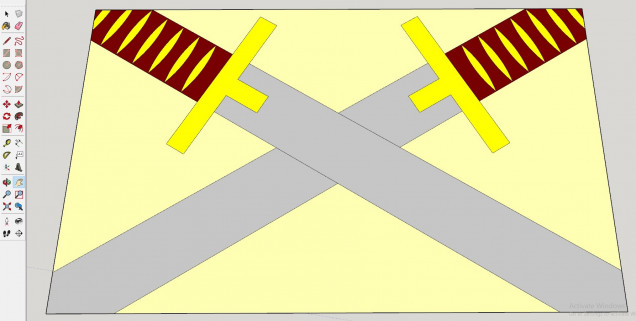
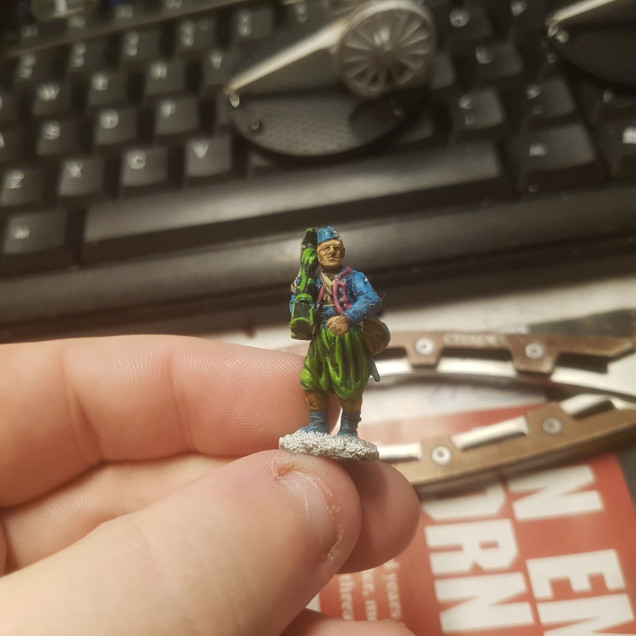
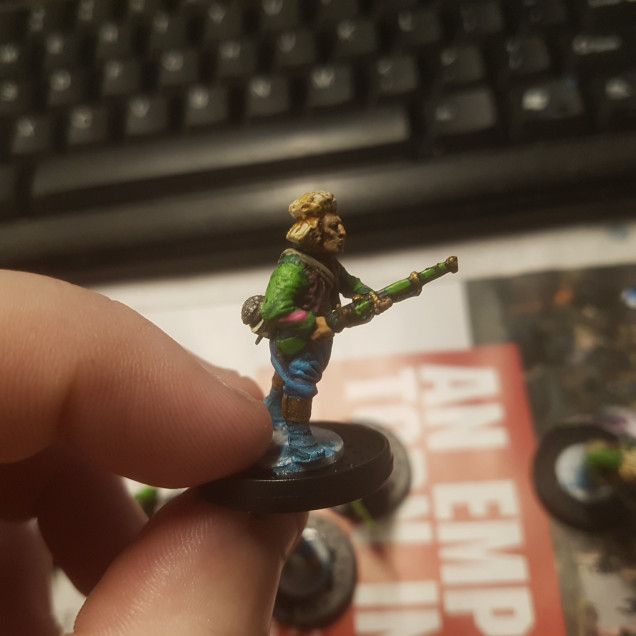
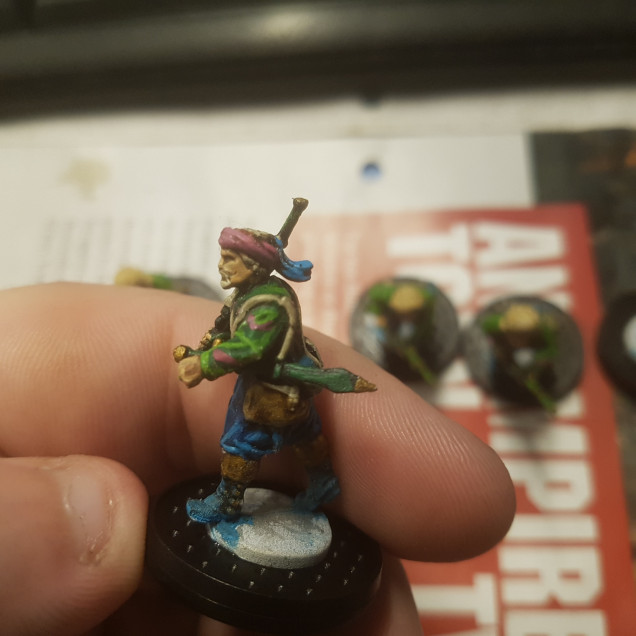


































Leave a Reply